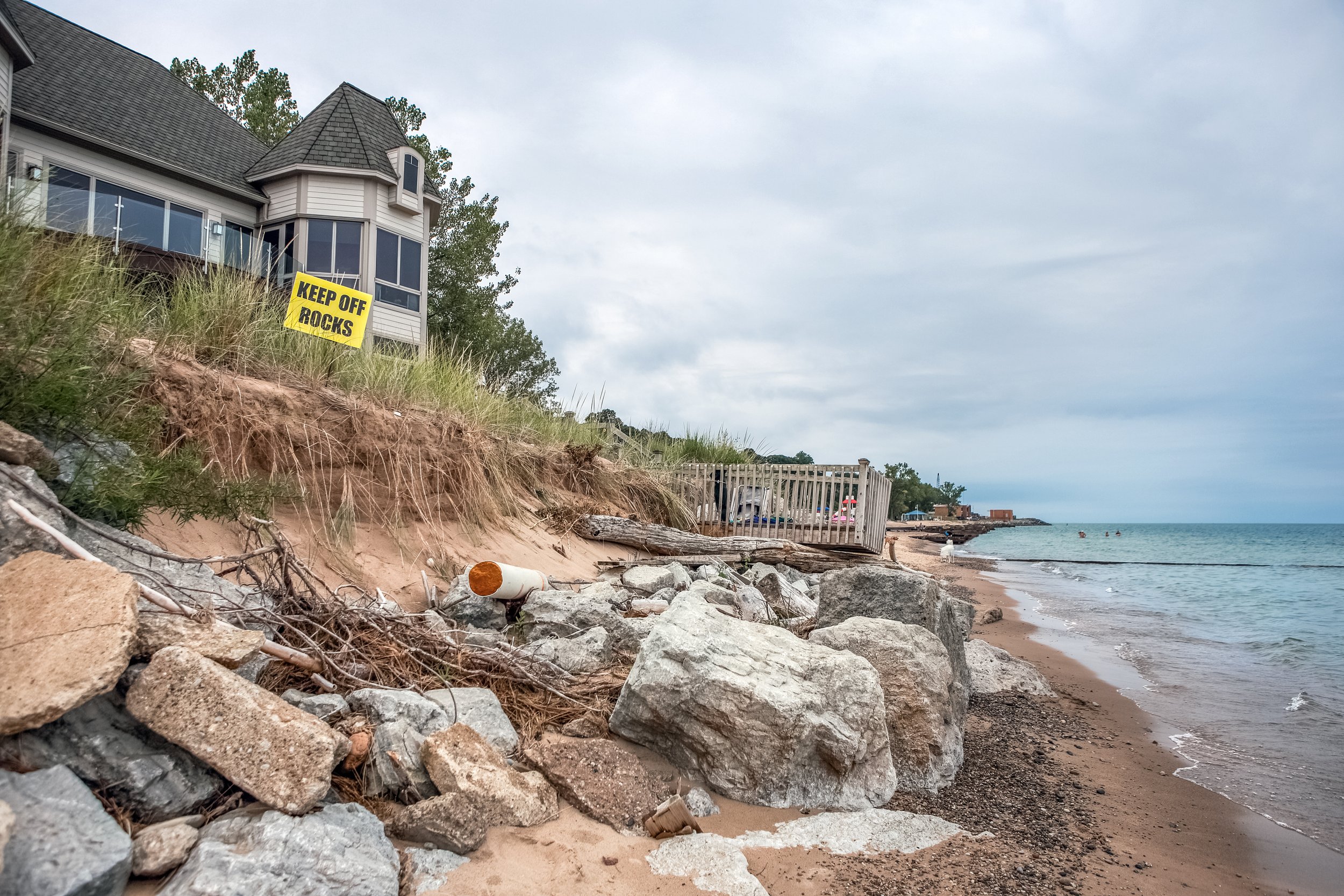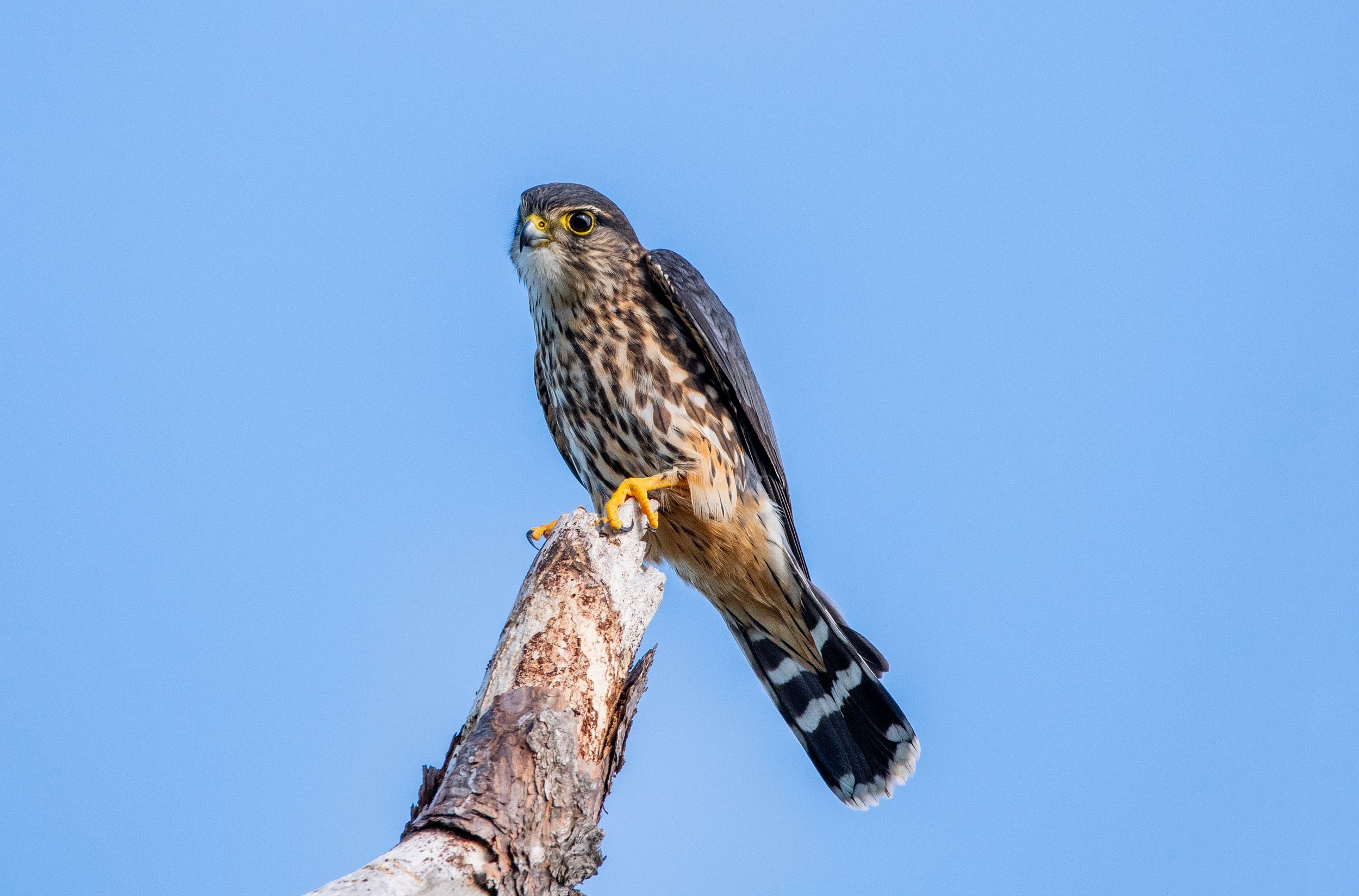Threats to plovers
When you’re this cute, life should be a walk in the park (er, beach), right? Wrong. Unfortunately, it’s not easy being a piping plover, and they face several threats to their survival.
Habitat Loss
Loss of habitat is one of the biggest threats facing plovers today. Plovers prefer a very particular habitat to build their nests. You can’t really blame someone for wanting to live or play along the lake, but development along the Great Lakes shores means fewer places where plovers can nest.
Nest Disturbance
Disturbance to plover nesting sites by humans, animals, and vehicles can lead to nest abandonment. Fido may love a frolic on the beach, but he might get a little too excited amidst all the fun and harm nesting adults or their chicks. The color of their eggs and chicks, while acting as a camouflage, also makes it difficult for people to see, and could result in eggs or chicks being crushed.
Predators
Have you ever heard the saying, “You’re so cute, I could just eat you up”? Unfortunately, some animals feel that way about piping plovers. Okay, maybe it’s not the cuteness factor that causes it, but in fact, predation is one of the leading causes of nest abandonment. Merlins, gulls, raccoons, and even dogs and cats can feed on eggs, chicks, or adults.
Weather Events
Severe storms can lead to flooding of nests. Warming temperatures are expected to cause the Great Lakes to rise between 7 to 19 inches by 2050 (Dzombak, 2022). Higher water levels mean fewer nesting sites. Warmer water temperatures also favor the production of the Botulinum toxin, which has caused death in some plovers (National Park Service, 2023). Weather events at their winter sites, such as hurricanes, can also have a negative effect on their survival (Ellis, et al., 2021).
Sources:
Dzombak, R. (2022, June 22). Great lakes levels are likely to see continued rise in next three decades. https://news.agu.org/press-release/great-lakes-levels-are-likely-to-see-continued-rise-in-next-three-decades/
Ellis, K. S., Anteau, M. J., Cuthbert, F. J., Gratto-Trevor, C. L., Jorgensen, J. G., Newstead, D. J., Powell, L. A., Ring, M. M., Sherfy, M. H., Swift, R. J., Toy, D. L., & Koons, D. N. (2021). Impacts of extreme environmental disturbances on piping plover survival are partially moderated by migratory connectivity. Biological Conservation, 264, 109371. https://doi.org/10.1016/j.biocon.2021.109371
National Park Service. (2023, June 28). Sleeping Bear Dunes National Lakeshore. https://www.nps.gov/slbe/learn/nature/sick-birds.htm
Photo: AdobePhoto: Joy ThompsonPhoto: Adobe


